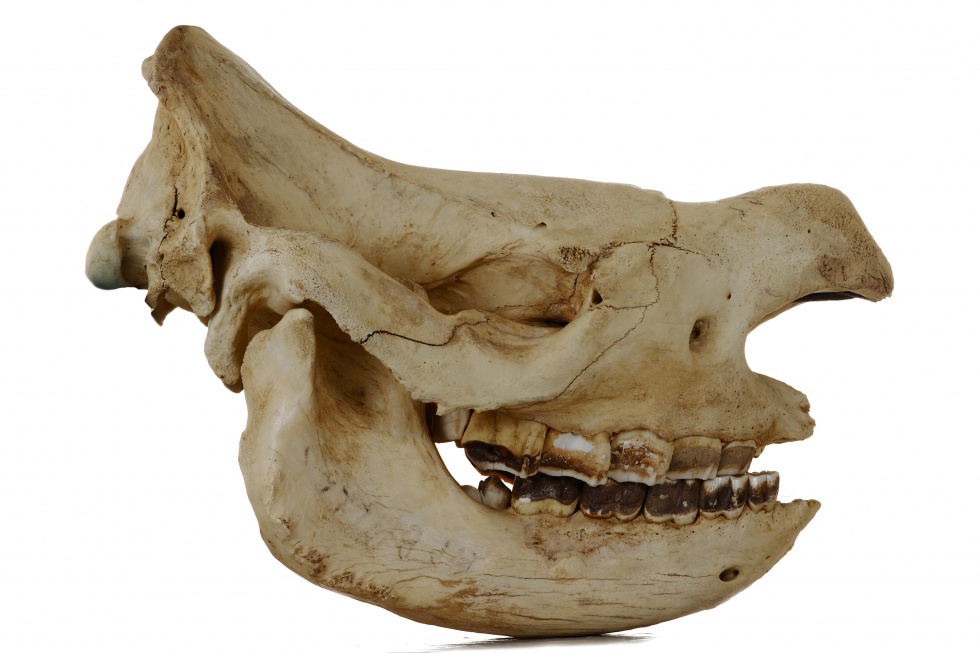Das Spitzmaul-Nashorn ist - nach den drei heute noch lebenden Elefantenarten und dem Breitmaul-Nashorn - mit 3,50 m Kopf-Rumpf-Länge, einer Schulterhöhe von bis zu 1,60 m und einem Gewicht bis zu 1.600 kg eines der größten und schwersten Landsäugetier. Die Oberlippe des "Spitzmauls" kann zum Greifen eingesetzt werden, so dass das "Spitzmaul" auch in der Lage ist Blätter zu zupfen, wohingegen das "Breitmaul" lediglich Gras abrupfen kann. Die Zahnformel erwachsener Tiere lautet: I 0/0, C 0/0, P 3/3, M 3/3 x 2 = 24. Schneidezähne sind nur noch embryonal nachweisbar.
Der hier gezeigte Schädel wurde am 12. März 1991 vom Institut Royal de Sciences Naturelles de Belgique in Brüssel für die osteologische Sammlung des Museums angekauft.
en

